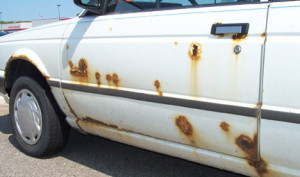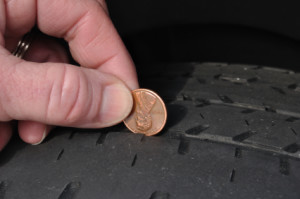How to Buy Your First Car

Photo by Cars Guide
By Sean Fugardi, Live Wire Staff Writer
Buying your first car is an important step in your own personal freedom, but most people don’t know what to look for or how to go about looking. The following is based on a dealership multipoint inspection, but more generalized and easier to use for someone who doesn’t necessarily know a lot about cars.
Before you even go and see a car, there are a few things you should research first. Figure out how much maintenance and parts will cost. Upkeep on a Cadillac will be more expensive than upkeep on a Honda. For instance, the Honda will also break less often than the Cadillac.
You should also check to see if there are any recalls or Technical Service Bulletins (TSBs). A TSB is a paper (usually internal to the company) detailing a known issue that is not a recall and how to repair it.
Another good place to check for common issues is www.carcomplaints.com. This site details common issues reported by owners, rather than the manufacturers, as well as an average cost to each repair. No car is perfect, but just because issues have been reported, does not mean that the particular issue will affect every car. It is preferably a good idea to know what you may be in for before spending money.
If you are dealing with a private seller, ask them for the service history if they have it. If you are at a dealership ask for the Carfax report or equivalent. Also ask the seller why the car is for sale, the idea of this is to find out if they are just selling their car because they don’t drive it anymore, or if there is something actually wrong with the car and they are getting rid of it.
Note on to the inspection itself, start by walking around the car, look for rust, damaged parts, and cracked lights or windows. If there is water or moisture inside of the light fixtures, this will cause the bulbs to burn out faster than they normally would.
Check the tires; hold a penny upside down in the tread, if you can see all of Lincoln’s head the tires will need to be replaced.
Check the brakes while you are down there. If there is a little rust on the rotors that is normal, it just means that the car has been sitting for a while, however, if there is a ton of rust, or there are deep gouges, the brakes may need to be replaced or they may not work properly.
Check under the car as well. Keep looking for rust, also look for fluids leaking or seeping, the bottom of the car should be dry. If you are looking at an older car, it is more normal to see an oily film over things, but if any drips are forming, it is a sign of a potential issue.
Moving on to the engine bay, continue looking for rust especially around the strut towers, and also look for leaking fluids. Check the oil dipstick and the transmission dipstick if the car has one. Oil should be a brownish color (lighter is better than darker), never black.
Transmission fluid (if it is an automatic transmission) should be reddish. It shouldn’t have a significant smell, if it does, there are likely transmission problems. To check the fluid level in the transmission, the engine needs to be running. Double check the radiator to make sure there are no leaks or corrosion.
Also check the battery. There shouldn’t be a significant amount of corrosion on the terminals, and there shouldn’t be any extra wires in the engine bay (if there are extra wires, ask where they came from and who installed them).
Aftermarket speaker systems and HID lights are common upgrades done to cars, and can be perfectly fine, but use your own judgement to see if the person who installed them knows what they are doing, and did it right, or maybe messed things up in the process.
Inside the car look at the carpets and seats, smell the air. If it smells musty or moldy, there isn’t much you will be able to do to get rid of the smell. Make sure there are no missing or broken panels, do all the windows and door locks work? Does the entire door handle (inside and outside) work? Do all the seatbelts work properly? Make sure that the fabric doesn’t appear stretched or frayed in any way. If there is any damage to the seatbelts they may not do their job properly in the event of an accident. Also, make sure there aren’t obvious signs of airbag deployment (ripped open dashboard/steering wheel).
Turn the engine on, are any warning lights lighting up on the dashboard? Have a friend check the headlights, turn signals, and taillights.
Finally, time to test drive the car. Drive around a bit, get up to highway speeds if possible. Are there any clicking or grinding noises? If there are speedbumps nearby go over them as well so the suspension shouldn’t make a significant noise. Watch the temperature gauge while driving; make sure it does not overheat. The test drive should take between 15 and 30 minutes (longer if it is extremely cold out). When you are done, let the engine idle, does it sound normal? (Even if you don’t know what you are listening for, an engine that is significantly misfiring should be fairly obvious) a normal idle is somewhere between 750 and 1000 RPM, a misfiring engine will not have a steady idle. There are things that may cause a fluctuating idle, but significantly higher or lower than that range is a sign of a problem.
Shut the car off and recheck the engine bay and under the car, make sure no fluid leaks have appeared (the seller may have cleaned the engine bay to make it look nice and to hide a potential issue).
After inspecting the car yourself, do some research on any of the problems you may have found. Just because you found something wrong doesn’t necessarily mean that you shouldn’t buy the car, but you should know how much you will need to pay to repair the issues. If you feel the repairs are worth it, then go ahead and buy the car.
Remember, this is by no means a comprehensive guide, and you should do a lot of your own research before buying anything. Be an informed buyer, and don’t get stuck with a lemon.
TSBs can be found here https://www-odi.nhtsa.dot.gov/cars/problems/tsb/ there are other websites available as well.








